Recently, at STH, we purchased a few new servers off of Newegg with a CPU many may never have heard of, the AMD EPYC 7C13. We had not tested them before, and they seemed interesting for another reason. These chips seem to sell for no more than $2000 or so, making them more of a cloud-priced 64-core EPYC than what we typically see on the market. Let us get to that very briefly and figure out exactly what the AMD EPYC 7C13 is.
AMD EPYC 7C13 Detials
First off, here is the lscpu output for the chips. What we can see is that these are Milan generation (EPYC 7003) parts with 64 cores and 256MB of L3 cache.
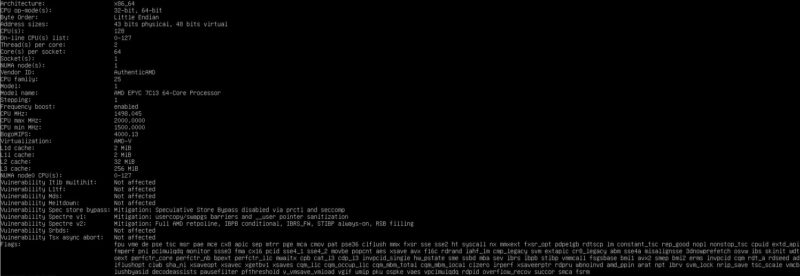
Doing a quick dmidecode, we can see that these are telling the OS that they have a maximum speed of 3700MHz and a current speed of 2000MHz.

Here is the test system. We can see that the 32MB L3 cache chunks are shared among eight cores, and there are eight of those clusters in total. This is certainly a Milan part. It also links up at PCIe Gen4 speeds, and the 1DPC 8x 64GB DDR4-3200 modules run at full speed.

AMD does not list these, but you can find it on the company’s website. Here are the official specs. Note that this 64-core CPU can cTDP down to 165W putting it almost in line with Xeon CPUs from ~7 years ago.
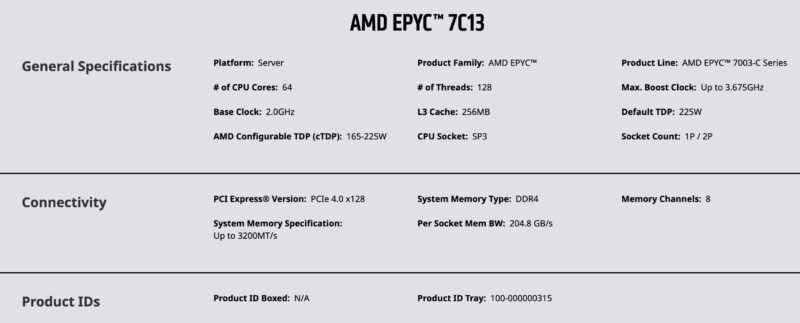
We were a bit worried that this was some kind of locked processor, but the system installed Proxmox VE 8.1 without issue.
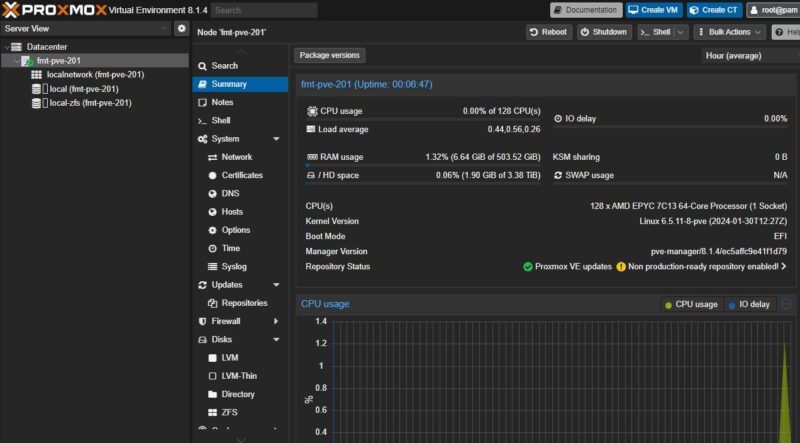
The next question we had was how would this run if we pushed it. So we turned on stress-ng across the entire 64-core/128-thread chip and saw CPU clocks sustain in the 2.42-2.43GHz range.
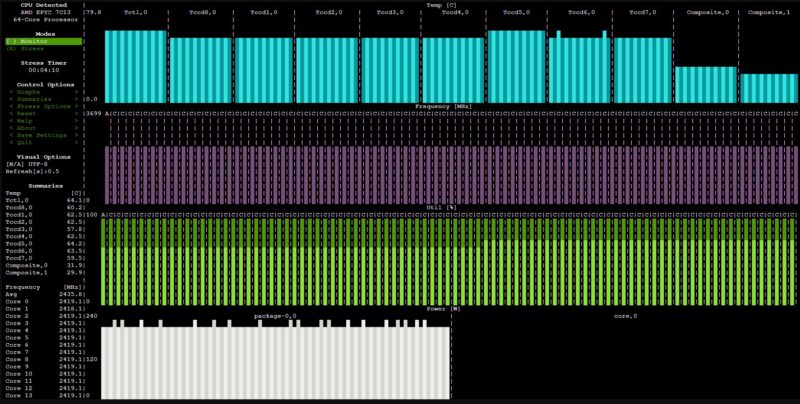
When we did that the package power was generally around 225W, but we saw it briefly creep above 230W from time-to-time and then back down. Our sense is that the default is 225W TDP, but we watched it go up a bit.

Performance-wise, if you see an AMD EPYC 7713P result, our initial results were very close to this, but we have not sent it to the testing data centers yet so our environment was not in the right range to report. Still, they were close.
Since we have been doing a series on Cloud Native Efficient Computing is the Way in 2024 and Beyond, we wanted to try this CPU. While it is not technically a cloud-native CPU, it is cheap, and at 64 cores, it is still plenty to consolidate dual-socket Xeon E5 V4 servers, Skylake, Cascade Lake, and 1st Gen EPYC 7001 into a single socket. The big question was whether it would work from a power perspective.
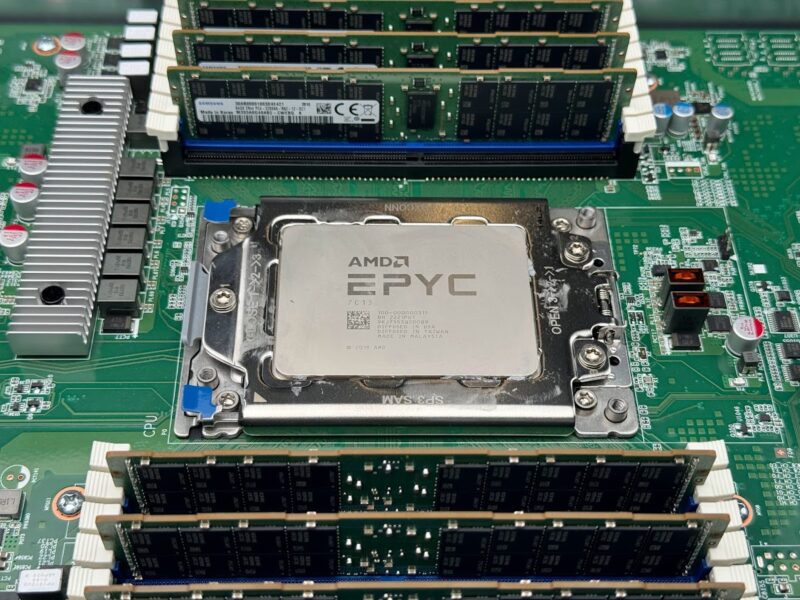
With a single AMD EPYC 7C13 CPU in a 1U Tyan server with 512GB of RAM (8x 64GB), an OCP 3.0 NIC, and two 3.84TB PCIe Gen4 NVMe SSDs we saw:
- Idle: 83.3W
- Stress-ng Max: 333.3W
Adding and additional two Intel Optane 905P 1.5TB drives increased power consumption slightly to the mid-90W range at idle and around 350W at maximum, which is still good.
To put that into some perspective, that is in the ballpark of what we would have expected from a 16-core Intel Xeon E5-2600 V4 dual-socket server. Or, put another way, from a performance and power consumption perspective, this might actually be a two dual-socket server-to-socket EPYC story.
Final Words
Unlike many of AMD’s other CPUs, these seem priced in the $1900-2000 range and are not P-series processors, so they are dual-socket capable. The closest normal SKU seems to be the AMD EPYC 7713P, which costs over $5000 at the list price and is single socket-only. Now that AMD is on its newer generation of parts, the EPYC 7003 series seems to have parts leaking with more cloud versus enterprise customer pricing. If you can get servers with them or to put the parts in, these might end up being a tremendous value for those looking to consolidate legacy servers onto newer hardware but not break the bank.





Awesome, thanks for the inspiration, I’ve just purchased a Tyan 1U server with the 64-core SKU and looking forward to get this running at my colo-provider. This will be replacing a machine that surprisingly is still running, an older dual 2.5Ghz E5-2640 v0 (!) 1U rack-server.
Is this one of the Chinese/Hygon Epyc processors that don’t have AES-NI but the Chinese equivalent instead?
No, this is a perfectly normal AMD Epyc, it’s just tuned for one of the big cloud providers and was sold exclusively to them. Now they are being replaced there and can be bought as used CPUs. There are several of these 7Cxx and 7Vxx models around. The differences to the usual Epyc models are very small, just slightly different clocks or something, which is why the fit right in.
Do you have the link for where this can be purchased on NewEgg? Do you have any pictures of the server itself?
Is there a 128 core equivalent as well?